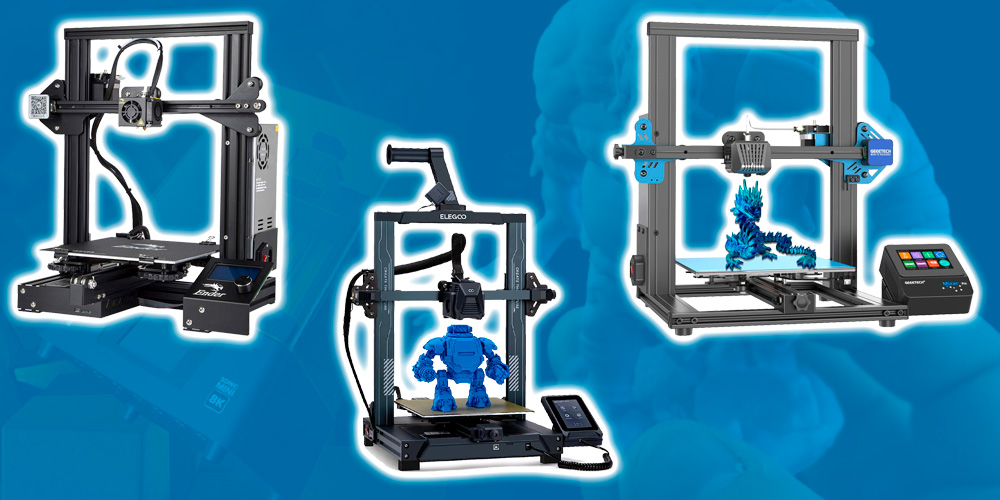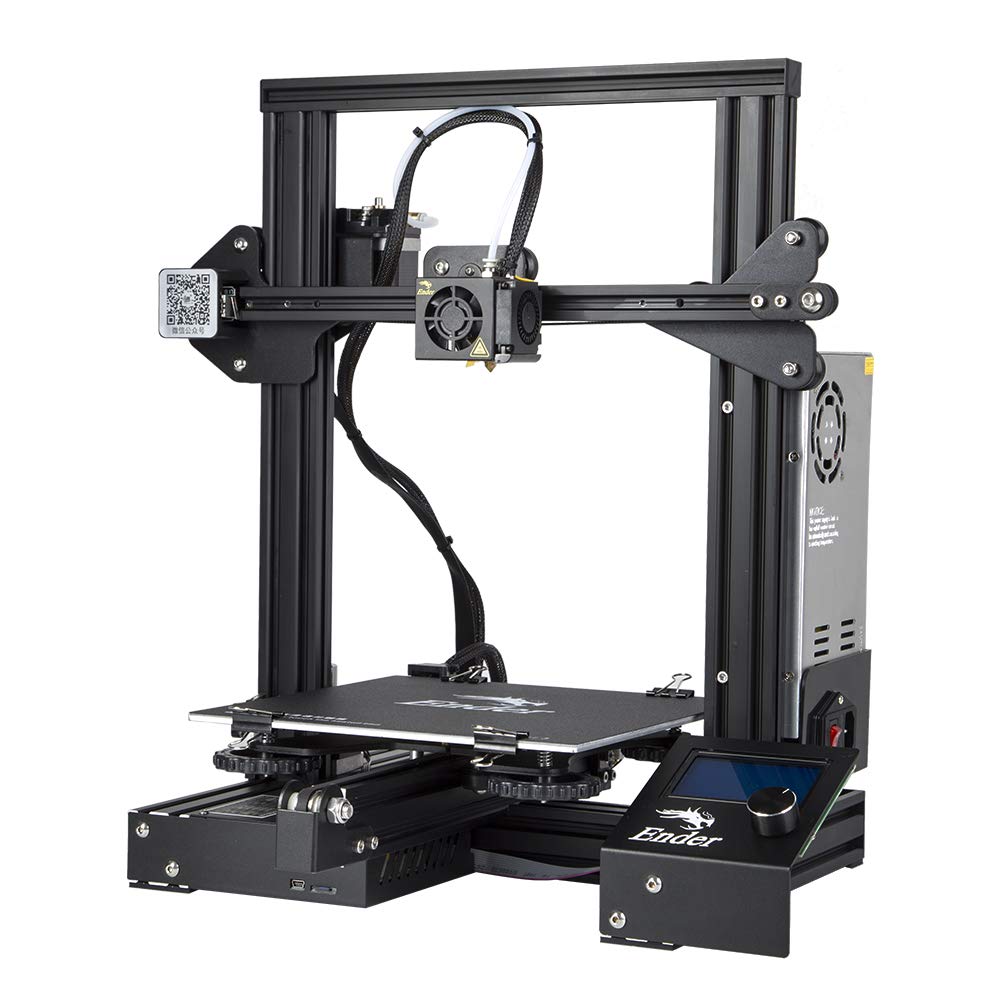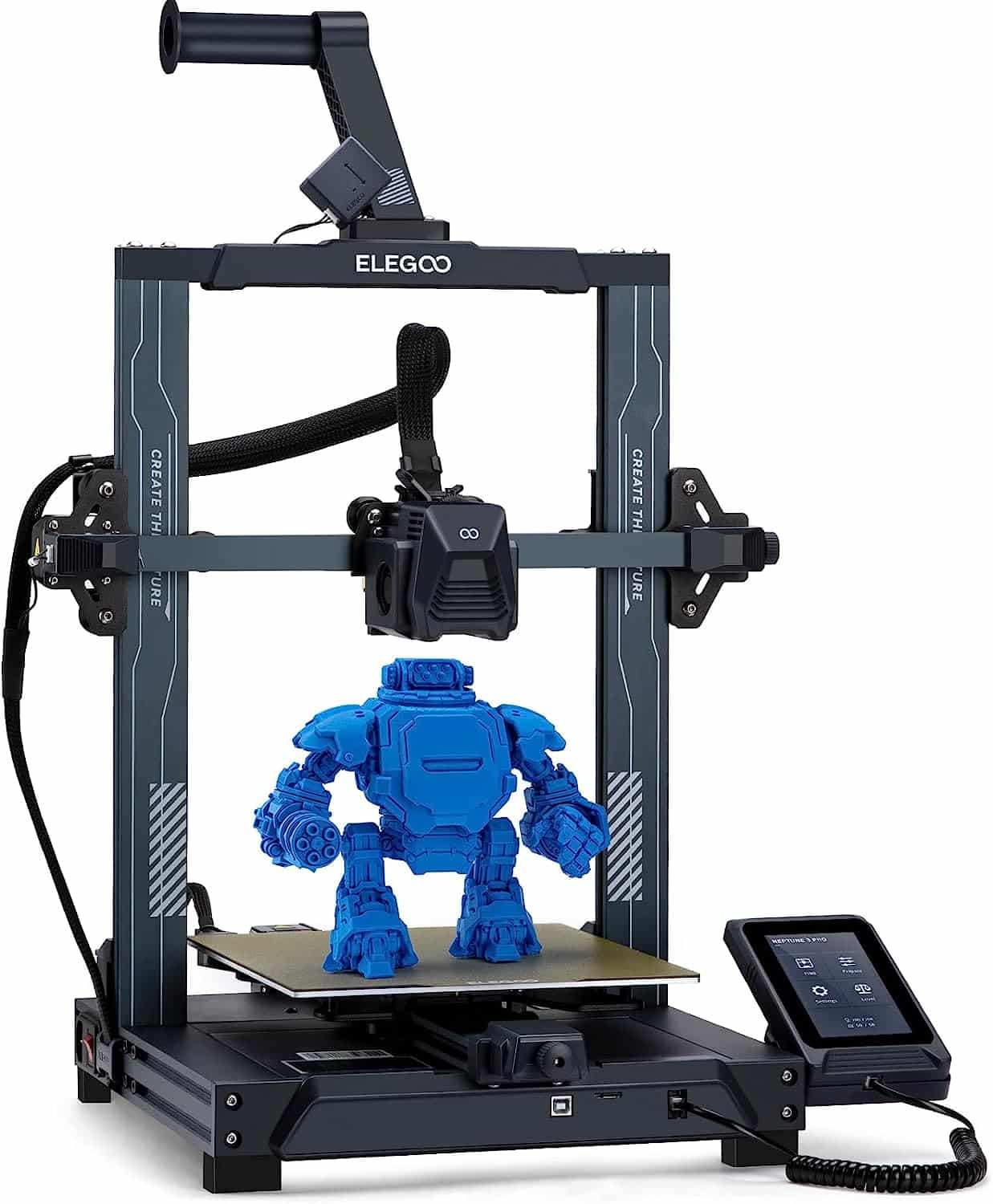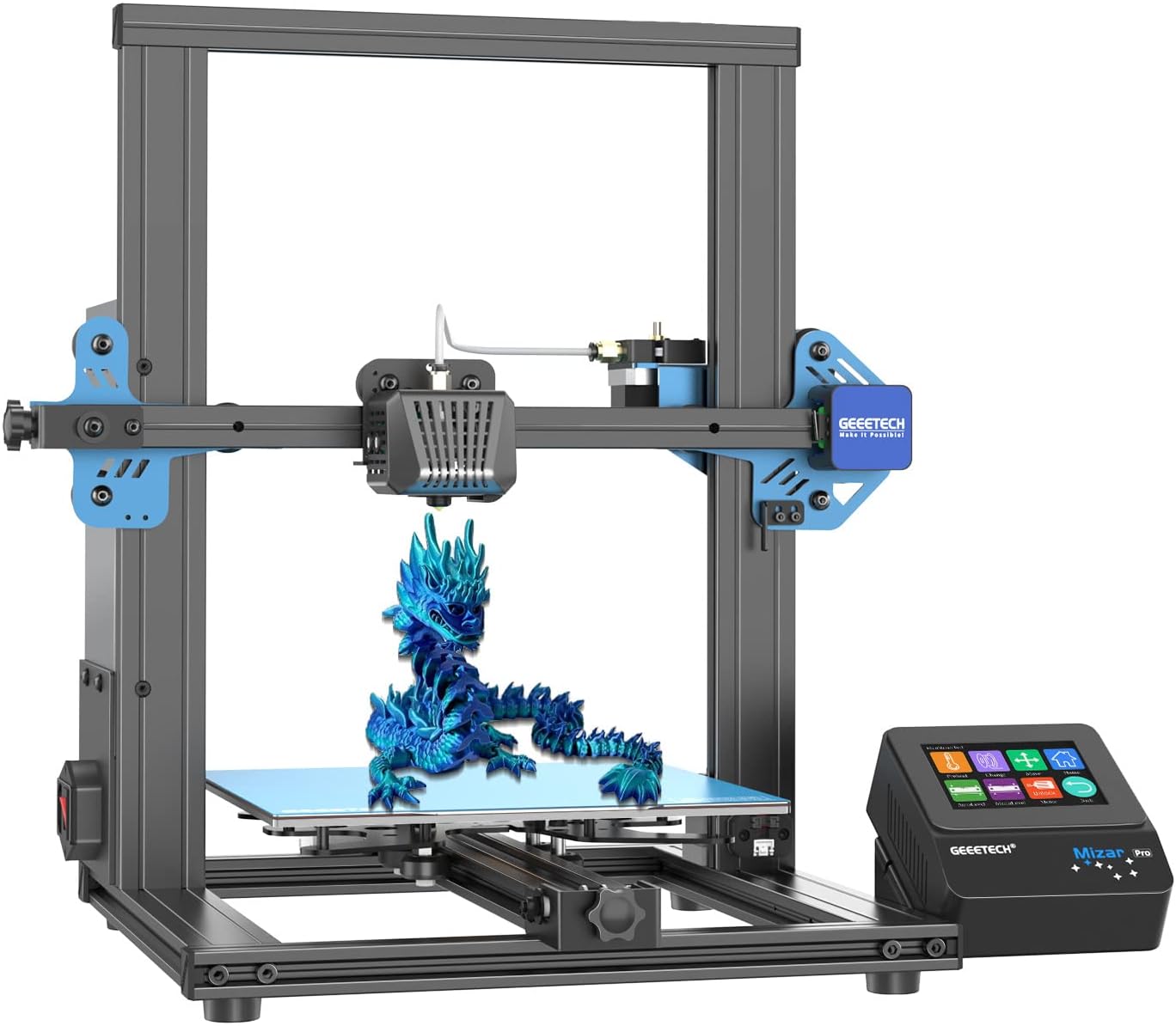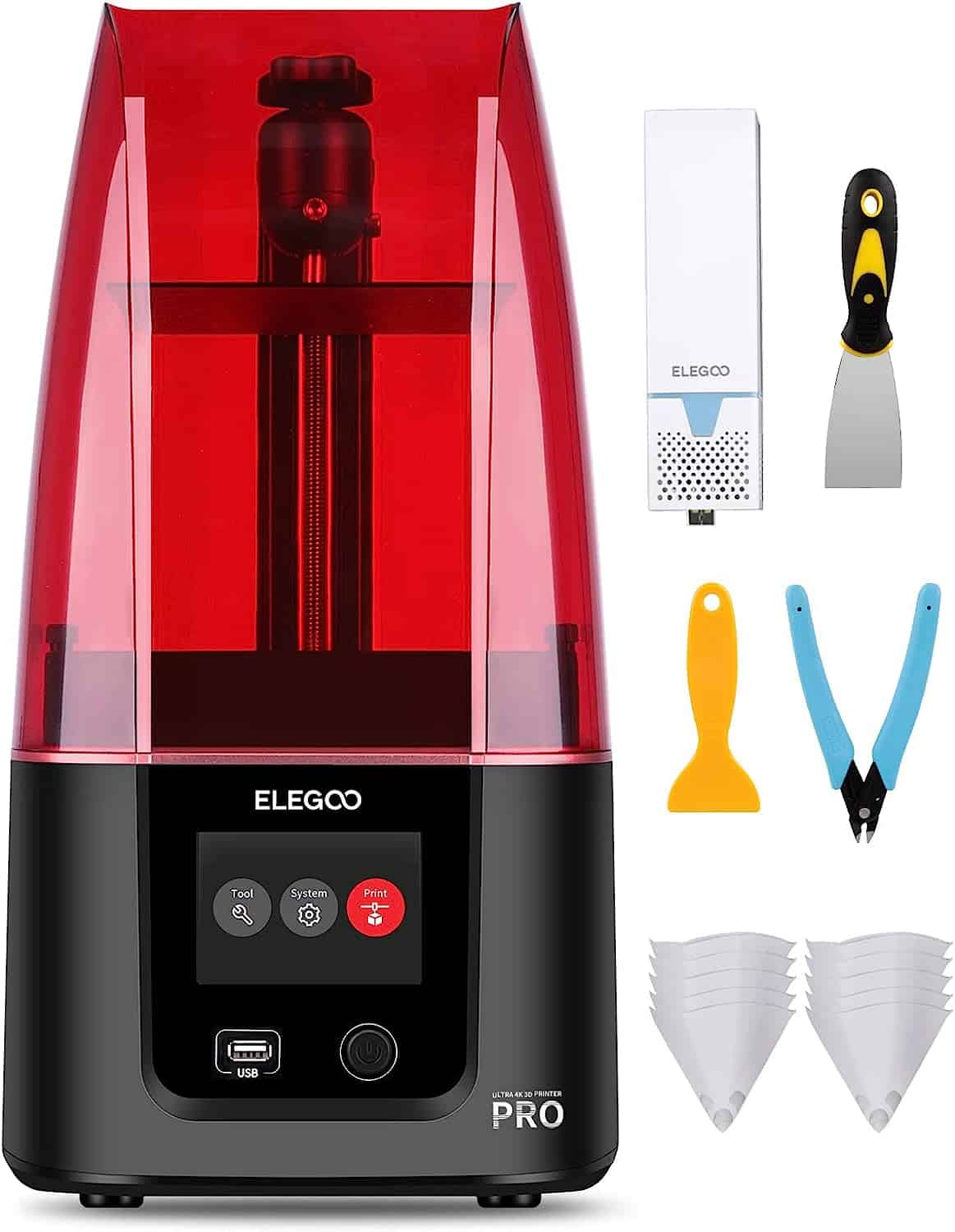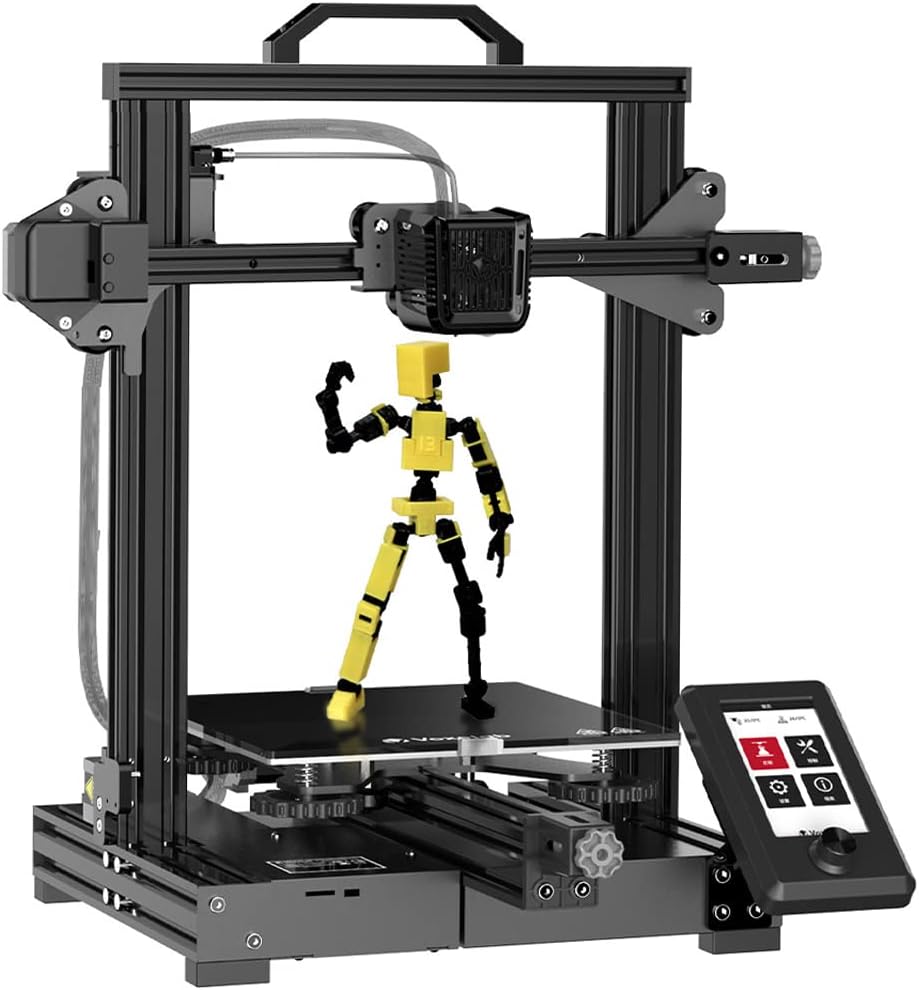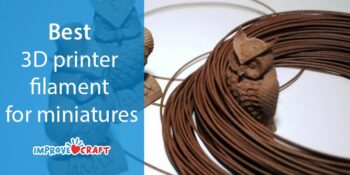In the magical realm of creation and innovation, 3D printing has rapidly transformed from a futuristic concept into an affordable, accessible reality. From creating intricate architectural models to bespoke pieces of jewelry, 3D printers have become an indispensable tool for hobbyists, designers, and engineers alike. But amidst the plethora of options out there, what’s the best 3D printer under $300? You’ve clicked on the right page to find out.
The democratization of 3D printing is arguably one of the most significant developments in recent tech history. Gone are the days where these machines were exclusive to high-tech labs and industry giants; now, anyone with a bit of know-how and the right equipment can bring their ideas to life from their living room. Yet, as with all technology, there is a vast landscape of options to navigate, with affordability being a key factor. The sweet spot, for many, is finding the best 3D printer under $300 – a price point that marries quality and value, enabling creativity without breaking the bank.
Our Top Picks
- Creality Ender 3 – Editor’s Choice
- ELEGOO Neptune 3
- Geeetech Mizar Pro
- ELEGOO Mars 3 Pro
- Voxelab Aquila X2
5 Best 3D Printers under 300$ in 2023
As we venture deeper into 2023, budget-friendly 3D printing options have never been so powerful and diverse. Here, we’ve meticulously researched and compiled the top 5 3D printers under $300, each delivering impressive performance and value that redefine what to expect from affordable 3D printing. These models are the epitome of high quality, cost-effective 3D printing, perfect for both novice and seasoned makers.
1. Creality Ender 3 – Editor’s Choice
Creality Ender 3 is the top-rated 3D printer under $300, making it the perfect choice for 3D printing enthusiasts on a budget. The machine presents a blend of affordability, user-friendly features, and impressive printing capabilities that are hard to match at this price point. It's an easy-to-assemble kit with comprehensive resources, like YouTube and forums, available to guide users through every step of the process. With Ender 3, users can create an array of objects, from simple toys to complex designs, thanks to its robust slicer software, excellent bed leveling features, and wide-ranging filament compatibility. The overall smooth and reliable printing experience, coupled with its durable build quality, justifies its position as the best choice for both beginners and experienced users in the 3D printing domain.
- Affordable
- Easy to Assemble
- Great Bed Leveling
- Wide Filament Compatibility
- Durable and Reliable
- Limited Instructions
- Requires Regular Adjustments
- Bed Cleaning Challenges
- Absence of Pre-Installed Auto Leveler
- Learning Curve with Slicer Software
As an ardent 3D printing enthusiast, I'm thrilled to introduce the ELEGOO Neptune 3 Pro - a remarkably budget-friendly choice that has cinched the number two spot in our rankings. Remarkably efficient and powerful for its price point, it has managed to redefine what users should expect from a 3D printer under $300. The Neptune 3 Pro combines a sizable 225 x 252 x 80 mm³ printing area with an STM32 motherboard for quiet, precise printing movements. Its dual-gear direct extruder constructed from high-quality stainless steel provides a robust extrusion force, and the auto mesh bed leveling mechanism ensures a consistently even printing platform. The intelligent resume feature is a lifesaver, pausing printing in case of filament issues or power cuts, and letting you resume right where you left off. Its well-conceived design also boasts dual synchronized lead screws and dual-motor drive for enhanced stability and precision during print jobs.
- Quiet Operation
- Direct Extruder
- Auto Bed Leveling
- Power Outage Resume
- Stable Printing
- Limited Filament Compatibility
- Noisy Cooling Fan
- Challenging Assembly
- Intermittent Sensor Issues
- No Wireless Connectivity
Sitting comfortably in the third spot on our under $300 3D printer list, the Geeetech Mizar Pro establishes its presence through solid performance and affordability. This printer has been a crowd-pleaser among beginners and intermediate users due to its mix of features that simplify the learning curve while not compromising on the quality of prints. A noticeable strength lies in its smart auto leveling system which practically eliminates the hassles involved in manual leveling, leading to quicker and more successful prints.
The Mizar Pro's impressive silent operation, enabled by its 32-bit silent motherboard and TMC2208 ultra-quiet driver, adds a level of convenience that's very appreciated in domestic settings. The filament and power detection sensors offer a safeguard against unforeseen interruptions, ensuring printing resumes seamlessly once the issue is resolved. While the assembly is relatively easy, some users noted minor difficulties, which were easily overcome by referring to the provided instructional video.
- Auto leveling
- Quiet operation
- Power/filament detection
- Easy assembly
- High print quality
- Minor assembly issues
- Occasional stringing
- Z-axis issue
- Touchscreen quality
- Unclear instructions
The ELEGOO Mars 3 Pro is an impressive piece of technology, positioned confidently in our rating as the fourth-best 3D printer under $300. This machine's primary strength lies in its exceptional build quality and thoughtful design, which stands out even among a swarm of competing devices. It's particularly noted for its suitability to beginners, making it an appealing choice for those new to the realm of 3D printing. The Mars 3 Pro employs a 6.66” 4K monochrome LCD and a new generation COB light source to deliver high-precision prints, proving that high-quality results needn't always come at a high cost. However, there are caveats – mainly software-related – which may prompt some hand-wringing from more experienced users.
- Beginner-friendly
- High-precision prints
- Strong build quality
- Good customer service
- Odor reduction feature
- Software limitations
- Stinky included gloves
- Manual's inaccuracies
- Hardware malfunctions (screws)
- Limited build space
The Voxelab Aquila X2, coming in at number 5 in our rating, makes a valuable contribution to the sub-$300 3D printer market. With a friendly learning curve for beginners, yet enough depth for more advanced users, it strikes a delicate balance between simplicity and flexibility. Assembling the printer is no great task, thanks to its semi-assembled kit and comprehensible instructions. In terms of print quality, it delivers consistently good results and is recognized for its reliability and robustness. The printer's 32-bit silent motherboard not only ensures quiet operation but also leaves room for ample customization. However, it's worth noting that the fans could benefit from an upgrade for quieter performance.
- Beginner-friendly
- Reliable prints
- Silent operation
- Durable build
- Open source, modifiable
- Limited built-in printer profiles
- Initial bed leveling
- Needs third-party slicers
- Noisy fans (upgradeable)
- More advanced filament types untested
The Factors to Consider when Choosing a 3D Printer under $300
Stepping into the world of 3D printing can feel like exploring a new universe, especially when you’re on a budget. But don’t let the diverse options deter you. Even at a sub $300 price point, you can find printers that don’t skimp on quality or functionality. Here are some essential factors to consider when hunting for the best 3D printer under 300.
- Printer build and design: A well-built printer doesn’t just look good – it offers stability during the printing process, ensuring precision and accuracy. Look for printers with sturdy, metal frames. Additionally, consider the build volume of the printer, which dictates the maximum size of the objects you can create.
- Print quality: The resolution of a 3D printer, measured in microns, influences the level of detail in the final print. Lower numbers indicate higher resolution. However, remember that a balance must be struck between resolution and printing time – finer prints take longer to produce.
- Material compatibility: Different printers are designed to work with different materials, most commonly PLA or ABS plastic. Some 3D printers are compatible with a broader range of materials, including nylon, wood, and metal filaments, giving you more flexibility in your creations.
- Ease of assembly and use: Especially for beginners, a printer that’s easy to set up and operate is a must. Some printers come semi-assembled, making the initial setup more manageable. Also, check if the printer includes user-friendly features such as a touch screen, resume print function, or filament detection.
- Software and connectivity: The 3D printer’s software, often referred to as slicer, plays a crucial role in translating your design into a language the printer understands. Ensure the printer supports user-friendly software, and consider how the printer connects to devices – via USB, SD card, or even WiFi.
- Customer service and support: Even the best 3D printer under 300 can present challenges, especially for newcomers to the field. Reliable customer support can make a huge difference, offering advice and solutions when you need them most. Look for brands with positive reviews regarding their customer service.
As you embark on your journey to find the perfect 3D printer, keeping these considerations in mind will help you make a well-informed decision, ensuring your entry into the realm of 3D printing is as smooth and enjoyable as possible.
How to Make the Most Out of a Budget 3D Printer
Even when you’ve zeroed in on the best 3D printer under 300, it’s crucial to understand how to optimize its performance and longevity. Here are some valuable insights to help you extract the most out of your budget 3D printer.
Tips and tricks for maintenance
Regular care can significantly extend the lifespan of your 3D printer and maintain its print quality. Cleaning the print bed after every use, tightening loose screws, and periodically lubricating the moving parts are some simple yet impactful maintenance steps. Also, remember to replace worn-out components like nozzles and belts timely to prevent any sudden breakdowns.
How to enhance print quality on a budget
While the intrinsic design of a printer largely determines its print quality, there are some hacks you can adopt to get improved results. Tweaking the print settings like print speed, layer height, and temperature can have a significant effect on the outcome. Also, using good quality filament and ensuring its proper storage can boost the print quality noticeably.
Upgrades and modifications worth considering
Many budget 3D printers are designed to be upgrade-friendly, allowing you to enhance their performance with aftermarket parts. Upgrades like a heated bed can help improve print adhesion, a better quality extruder can offer more precise filament control, and silent stepper motors can reduce the noise generated during printing. Remember, though, to weigh the cost of any upgrade against its potential benefits.
With a budget 3D printer, you’re not just buying a machine; you’re entering a community of creators and innovators. Embracing the journey with an open mind and a proactive approach will ensure you derive immense satisfaction and excellent results from your best 3D printer under 300$.
Buyer’s Guide
Navigating Your Purchase of the Best 3D Printer Under 300
Finding the right 3D printer can seem overwhelming, particularly for novices. Our buyer’s guide aims to equip you with all the essential knowledge you’ll need to make an informed decision.
What to Know Before Buying a 3D Printer
A 3D printer isn’t just another gadget; it’s an investment in your creative pursuits. Understanding its working mechanism, the different types of 3D printing technologies, and the materials it can handle is crucial. Remember, the best 3D printer under 300 for you might not be the one with the most features, but the one that aligns best with your needs.
Questions to Ask Before Purchase
Before taking the plunge, consider your purpose for the printer. Are you a hobbyist, an educator, a designer, or an entrepreneur? The frequency of usage, the size of the objects you plan to print, and your readiness to handle assembly and troubleshooting are other factors to ponder.
How to Choose a 3D Printer that Suits Your Needs
Start by assessing your skill level and your goals. If you’re a beginner, a printer with simple setup and operation will be apt. If you’re an experienced user or a tinkerer, you might prefer a printer that’s modifiable and versatile.
Understanding the Technical Specifications
Comprehending the technical jargon can be a hurdle for newbies. While some specs like build volume and printing speed are relatively straightforward, others like resolution and layer height might require a deeper dive. Invest some time in understanding these to match your expectations realistically with the printer’s capabilities.
Advice on Where to Buy a 3D Printer
Purchasing from reputable retailers or directly from the manufacturer is always recommended. These channels often offer proper warranties and customer support. Also, read reviews and engage in community forums to gain real-world insights into the performance and quirks of the printer you’re considering.
Equipped with this guide, you’re now ready to embark on your journey to find the best 3D printer under 300, a device that will let your creativity take a tangible form without breaking the bank.
FAQs
What are the additional costs associated with owning a 3D printer?
Besides the initial investment in the printer itself, you’ll need to account for the cost of printing materials or filaments, which vary depending on the type and quality. Regular maintenance costs, electricity consumption, and potential upgrades should also be considered.
What safety measures should I take when using a 3D printer?
Ensure your printer is on a stable, heat-resistant surface. Always supervise the printing process to prevent fire risks. Ventilate your space well as some filaments can release fumes. Keep printers out of children’s reach and wear protective gear if necessary, especially when handling heated elements or sharp tools.
Are there any specific environmental conditions required for effective 3D printing?
Yes, the ideal environment for 3D printing is a stable, cool, and dry place. Too much heat or humidity can affect the filament and the final print quality. Dust-free surroundings are also crucial to prevent clogging of the printer’s extruder.
How can I further improve the longevity of my 3D printer?
Regular maintenance such as cleaning the print bed and extruder, tightening screws, lubricating moving parts, and updating the software can significantly extend your printer’s lifespan. Using quality filament and avoiding harsh handling will also help.
Can I use 3D printers for commercial purposes or are they only suitable for hobbyists?
Yes, 3D printers can be used for commercial purposes like prototyping, product design, architectural models, and even small-scale production. However, for large-scale industrial use, you may require specialized 3D printers which are usually at a higher price point.
Conclusion
In conclusion, 3D printing doesn’t have to be an expensive venture. Even if you’re on a budget, there are quality options that ensure you can create amazing prints without breaking the bank. We’ve explored the top five 3D printers under $300, each offering their unique balance of value, features, and ease of use.
Our top three choices are the Creality Ender 3, ELEGOO Neptune 3, and Geeetech Mizar Pro. The Creality Ender 3, as our Editor’s Choice, offers a blend of affordability, user-friendly features, and excellent printing capabilities. The ELEGOO Neptune 3 stands out for its quiet operation and robust auto bed leveling feature. Lastly, the Geeetech Mizar Pro impresses with its auto leveling system and silent operation. Any of these three would make an excellent addition to your creative toolkit, offering the best balance of performance, price, and features in the 3D printer market under $300.

